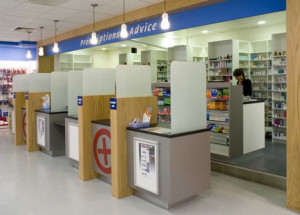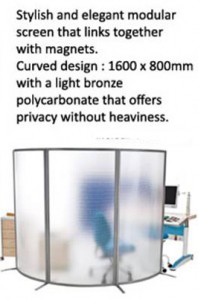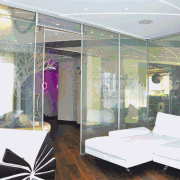I was standing at the reception counter at my local GP waiting to make an appointment for my next visit.
It was a hive of activity with conversations animatedly occurring all around me.
It was obviously going to be a bit of a wait before I got my turn and I started to observe more closely my surroundings.
Then I saw it!
A notice asking all patients to stand back from the desk in order to respect the privacy of other patients already transacting business within the reception area.
It was located on a shelf about 3 metres from where I was standing.
Hang on, I thought.
Aren’t pharmacists the profession regarded as not providing privacy for their patients?
Being a pharmacist I understood intimately and immediately, a number of the communications being conducted with members of my local population as I stood waiting my turn.
The level of privacy offered in that doctor reception area was obviously acceptable to all who patronised that particular group practice.
I certainly had never had a thought of complaining before I saw their sign, and I still don’t have any privacy concerns.
I think that in pharmacy we have become too sensitive to criticisms from our detractors such as the AMA who accuse pharmacists as conducting private conversations between the “toilet paper and the toothpaste”.
Yet I had just discovered one of their own members conducting a continual range of private conversations between “the front door and the patient toilet”.
Obviously the general public are willing to accept a certain content level accompanied by a minimal standard of privacy, and from my own investigations you can actually categorise various types of content privacy into a grading scale.
For example, grade 1 privacy content can be discussed with a minimal level of privacy (pharmacy counter or “health bar”), Grade 2 may be a partitioned desk separated by security glass panels (located front of dispensary forwards pharmacy style), Grade 3 may be a private corner coffee table and comfortable chairs away from busy traffic, Grade 4 may need an area that obscures patient identification and offers sound suppression (polycarbonate partitions), while Grade 5 may be an enclosed and fully soundproofed treatment room (utilising “Switchglass for privacy).
Illustrations of these types of privacy spaces appear further along this article.
The GP surgery I attend has a large room towards the rear of the building and adjacent to all of the GP enclosed offices (Grade 5 equivalent). The room is used for minor surgery and wound dressing as well as administration of injections by nurses. The reception area was located to the front and was considered a Grade 1 space, with privacy equivalence to the pharmacy health bar space.
The surgery room was divided into semi-private sections utilising curtains, but you could still view most patients in varying forms of undress (grade 2 and 3 equivalent), and you could overhear most conversations, some sections more so than others.
There was an office area built from particle board partition which was used for surgeries of duration of around 30 minutes (grade 4 equivalent). You could view what was going on if you walked close to the open door and you could definitely hear some of the conversations if you were a patient located in a curtained partition area. Nobody appeared to be complaining there about privacy, although I felt a bit vulnerable lying on a treatment table in my mostly naked presentation, accompanied by a nurse and a young medical student (female) who was carefully scrutinising every detail of the BCC being removed from my shoulder by my GP.
I then visualised what this surgical area would look like if located adjacent to a dispensary in a community pharmacy.
My immediate reaction was that it would not work – it was not private enough!
Yet the privacy grade would have been comparable to the GP location.
My reaction was simply a “knee-jerk” reaction – one without thinking things through.
So from that random observation I believe that the general public and other health professionals will demand a higher standard from pharmacists who perform clinical services than they would expect from themselves providing the identical service.
Life wasn’t meant to be easy – expect a gauntlet of challenges from all quarters as pharmacists tentatively advance their clinical practices.
It also struck me that as we move into online or mobile phone appointment booking that one of the patient selections (tick box) might be “preferred privacy location”.
By asking the patient to decide on the level of privacy you immediately defuse any future complaint.
And by creating the selection, both sides to a consultation are immediately aware that a privacy location has been made available to a desirable standard.
It is also a good marketing tool and immediately trumps any complaints arising from other health care professionals feeling a bit competitive and the usual chorus of pharmacy detractors looking for any excuse to “rubbish” the profession.
Privacy spaces in a pharmacy can be geared to patient waiting time.
Obviously the lower grade spaces can have a higher turnover for patients because the space requires minimal support in staff and systems.
It can also be a grade for the pharmacists providing services in these areas.
Obviously, as consultations become more complex they become more private and require a more experienced pharmacist.
And extending that concept further we now have the basis for an on-the-job education system – a 5 year mentoring plan to educate pharmacists in primary health care delivered from appropriate clinical spaces with matching clinical knowledge.
(article continues below photographs)





Now we are ready to incorporate clinical services into a local area marketing system.
This economical form of marketing beats marketing group abilities because all you need to attract are patients from your local catchment area. By applying CRO strategies, such as those used by ConversionTeam, clinics can maximize patient engagement and improve conversion rates, ensuring that more local prospects turn into loyal patients.
The tools to do this would need to be a basic information website connected to information modules, an online booking system and a shopping cart to prepay for each booking.
An online e-newsletter delivered to every person registered as a patient enrolment to your professional program on a regular basis, enables you to tailor your particular offering discretely, and avoids disruption by competitors.
Other modules for your local area marketing can be incorporated similar to an earlier article found at http://i2p.com.au/electronic-shelf-labelling-a-nucleus-for-your-own-local-area-marketing-system/
The system also offers a suitable channel to develop offers to other areas of your pharmacy marketing e.g. S3 promotion; compounding offers.
The inertia that has typified community pharmacy over the past twelve months is such that it has reached a level where opportunity is being lost on a daily basis.
Certainly, there is a need to cut costs but investments in clinical spaces can be offset by reductions in certain categories of stock and units held.
Marketing costs can be reviewed by determining the level of expensive market group offerings.
By negotiating only the segments that you may have continued need for you can save on costs and invest in your own local area marketing concept. Managers of healthcare facilities may consult with experts in medical seo services to boost their digital marketing efforts.
The more of the marketing activity that you actually “own” within your pharmacy, the more successful you will be and the more economical your overall cost will be (expressed as a percentage of overall sales).
I’ll leave the final comment for marketing guru Seth Godin, who seemed to have local area marketing in mind when he penned these philosophical words:
Fast growth comes from overwhelming the smallest possible audience with a product or service that so delights that they insist that their friends and colleagues use it. And hypergrowth is a version of the same thing, except those friends and colleagues quickly become even bigger fans, and tell even more people.
Often, we get sidetracked when we forget about “smallest possible.” If you make the audience you’re initially serving too big, you will dilute the very thing you set out to make, avoid critical mass, and compromise the magic of what you’re building. You’ll make average stuff for average people instead of something powerful for the few.
By “smallest possible” I don’t mean, “too small.” I mean the smallest number that eventually leads to the kernel of conversation that enables you to grow.
